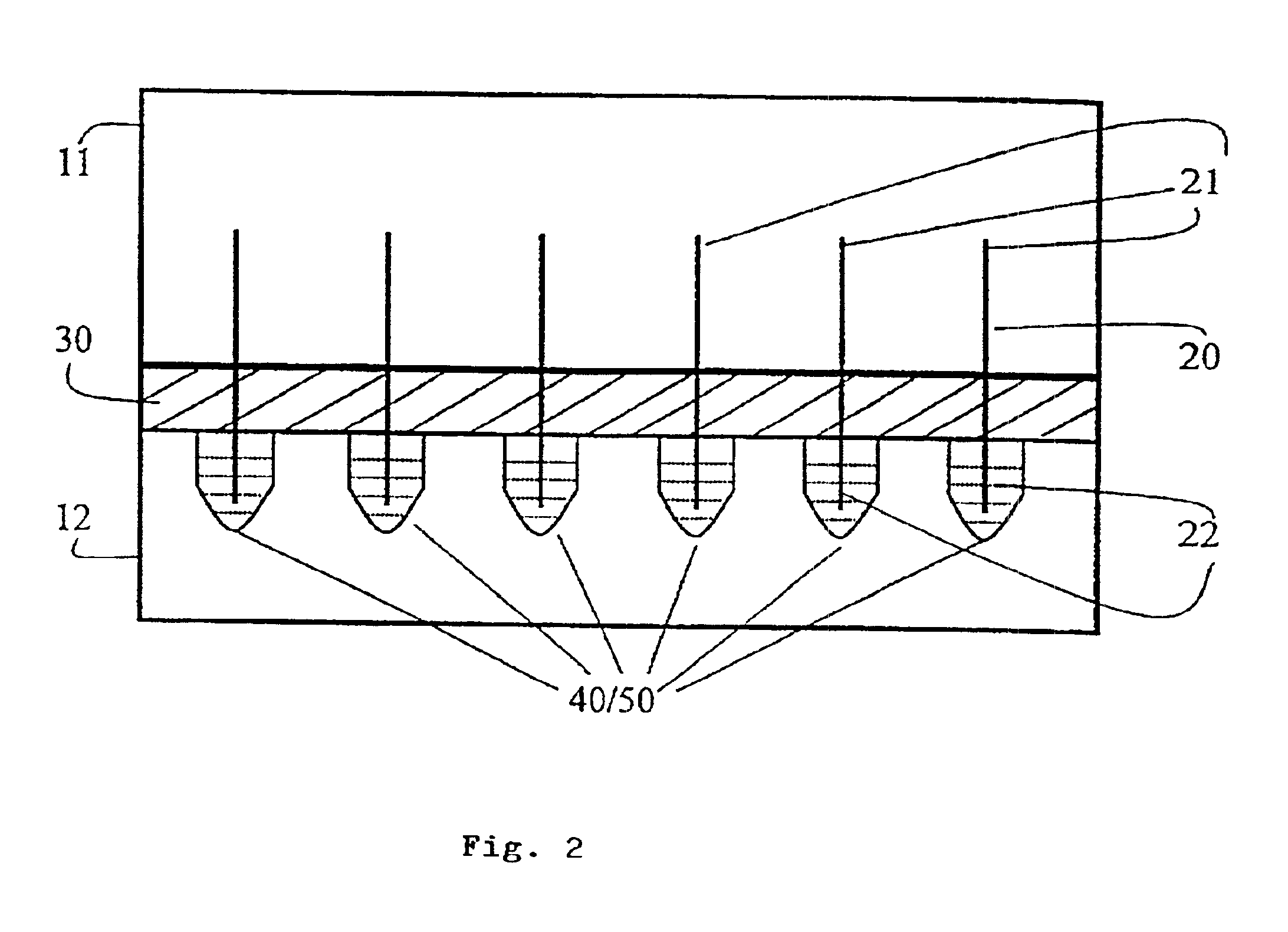Device and method for concentration of samples by microcrystallization
a micro-crystallization and sample technology, applied in the field of sample preconcentration and sample handling, can solve the problems of hardly any method for concentrating sample solutions, long freeze concentration process, and great challenges for combinatorial chemistry
- Summary
- Abstract
- Description
- Claims
- Application Information
AI Technical Summary
Benefits of technology
Problems solved by technology
Method used
Image
Examples
example 1
In this experiment the performance of the device of the present invention is demonstrated to concentrate five inorganic anions (Cl−, SO42−, NO3−, NO2− and Br−, each at the concentration of 0.1 μg / mL) in high purity water. A slush bath (prepared by mixing ethanol with dry ice) with a temperature of −70° C. was chosen as the thermostat 11, and a water bath (room temperature 25° C.) was used as the thermostat 12. The copper wires 20 were of diameter 1 mm. Eppendorf tubes with a volume of 500 μL were used as the sample containers 50. Time of concentration was recorded when the slush bath was poured into the thermostat 11.
FIG. 3 is a schematic diagram illustrating the changes of the sample solutions in the sample containers 50 during freeze concentration (FIGS. 3A, 3B, and 3C show the changes at 1, 5 and 7 minutes after the slush bath was added into the hemostat 11. FIG. 3D shows the final stage when the ice and the wires 20 were separated from the concentrated solutions remaining in the...
example 2
One of the advantages of freeze concentration is that it can be used to concentrate volatile and semi-volatile substances in aqueous solutions. In this example, two phenols (phenol and 3-chloro-phenol, at the concentration of 5 μg / ml each) were concentrated by the device of the present invention. The conditions used were the same as those in the example 1. FIG. 5A shows the electropherogram of the samples before concentration. FIG. 5B shows the electropherogram obtained after applying the freeze concentration process of the present invention. It can be seen that nearly 8 times concentration was obtained.
example 3
Many biological molecules, such as proteins and RNA, could be damaged during high temperature or organic solvents treatments. Freeze concentration can be a good choice for concentrating such thermally labile and chemically sensitive biological molecules because it doesn't involve any high temperature or organic solvents. This example demonstrates concentrating two proteins (Lysozyme and Trypsin, at the concentration of 12.5 μg / mL and 17.5 μg / mL, respectively) using the device of the present invention. First the concentration of the protein solution by the conditions in the examples 1 and 2 was tested. Small concentration efficiency (about 1.5 times) was obtained. The reason may be due to the low diffusion coefficient of the proteins. The growth rate of the ice in the above conditions was significantly faster and may be larger than the diffusion rate of the proteins. Therefore, much of the protein molecules were included into the ice lattice. As such, the growth rate of the ice durin...
PUM
| Property | Measurement | Unit |
|---|---|---|
| Diameter | aaaaa | aaaaa |
| Temperature | aaaaa | aaaaa |
| Diameter | aaaaa | aaaaa |
Abstract
Description
Claims
Application Information
 Login to View More
Login to View More - R&D
- Intellectual Property
- Life Sciences
- Materials
- Tech Scout
- Unparalleled Data Quality
- Higher Quality Content
- 60% Fewer Hallucinations
Browse by: Latest US Patents, China's latest patents, Technical Efficacy Thesaurus, Application Domain, Technology Topic, Popular Technical Reports.
© 2025 PatSnap. All rights reserved.Legal|Privacy policy|Modern Slavery Act Transparency Statement|Sitemap|About US| Contact US: help@patsnap.com



